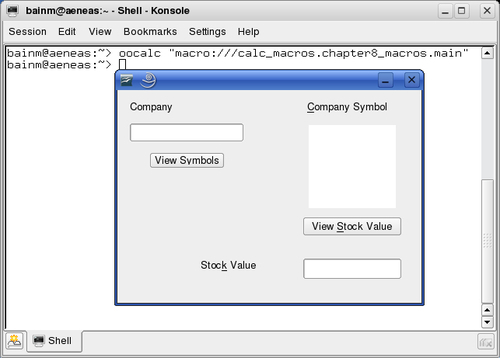

Things work in a similar fashion within Visual Basic for Applications. When working directly in Excel, you use the Save As command if you want to be able to determine more about the way the actual saving of a workbook takes place. The workbook is saved and that's pretty much it. However, it doesn't allow you to determine much in connection with the way the relevant Excel workbook is saved. Just as when working directly with Excel, the Save method is an important command/method that is relatively easy and straightforward to execute.

In summary, the sample Save_Workbook macro above simply saves the current active Excel workbook. The workbook that is returned by the ActiveWorkbook property is, more precisely, the workbook in the current active window. This property returns a Workbook object, as required by the Workbook.Save method. In this case, ActiveWorkbook is a simplified reference to the Application.ActiveWorkbook property. Notice that the macro has only 1 statement which follows the general syntax of the Workbook.Save method explained above: You can get immediate free access to this example workbook by subscribing to the Power Spreadsheets Newsletter.

This Excel VBA Save Workbook Tutorial is accompanied by an Excel workbook containing the data and macros I use (including the Save_Workbook macro). The following macro, named “Save_Workbook”, saves the current active workbook: Let's take a look at an example to make this clearer. Where “expression” is the relevant Workbook object you want to save. The syntax of the Workbook.Save method is as follows: In other words, the Workbook.Save method is, roughly, the VBA equivalent of the Save command in Excel. Workbook.Save saves the relevant workbook. The most basic method to save Excel workbooks using VBA is the Workbook.Save method. How To Save An Excel Workbook Using the Workbook.Save VBA Method Let's start taking a look at the basic ways to save an Excel workbook using VBA. I explain how to export an Excel file to PDF using macros, and provide several code examples, here.
:max_bytes(150000):strip_icc()/015_add-macros-in-excel-4176395-ccef2bdceebe4c7fbad5d3420537b795.jpg)
This Excel tutorial doesn't cover the topic of saving an Excel workbook as PDF using VBA. The Application.GetSaveAsFilename Method: Arguments.The Application.GetSaveAsFilename Method: Syntax.The Application.GetSaveAsFilename Method: Purpose.How To Name A Workbook Using The Application.GetSaveAsFilename Method.How To Save A Copy Of An Excel Workbook Using The Workbook.SaveCopyAs VBA Method: An Example.Part #2: Filename:=ActiveWorkbook.Path & “\Copy ” & Format(Now, “yy-mm-dd”) & ” ” & ActiveWorkbook.Name.How To Save A Copy Of An Excel Workbook Using The Workbook.SaveCopyAs VBA Method.How To Save An Excel Workbook With A New Name Using The Workbook.SaveAs Method.How To Save An Excel Workbook Using The Workbook.SaveAs VBA Method.How To Save An Excel Workbook Using the Workbook.Save VBA Method.


 0 kommentar(er)
0 kommentar(er)
